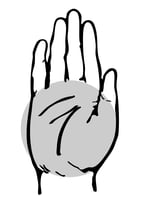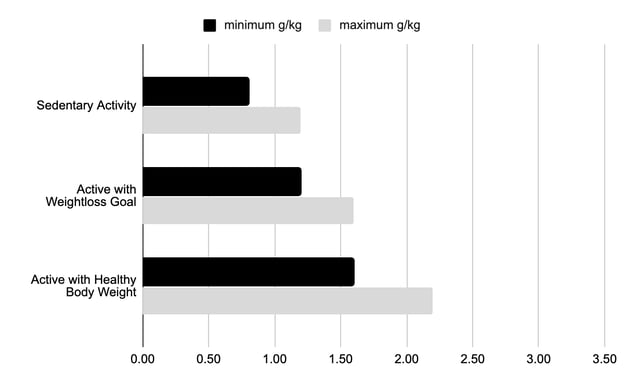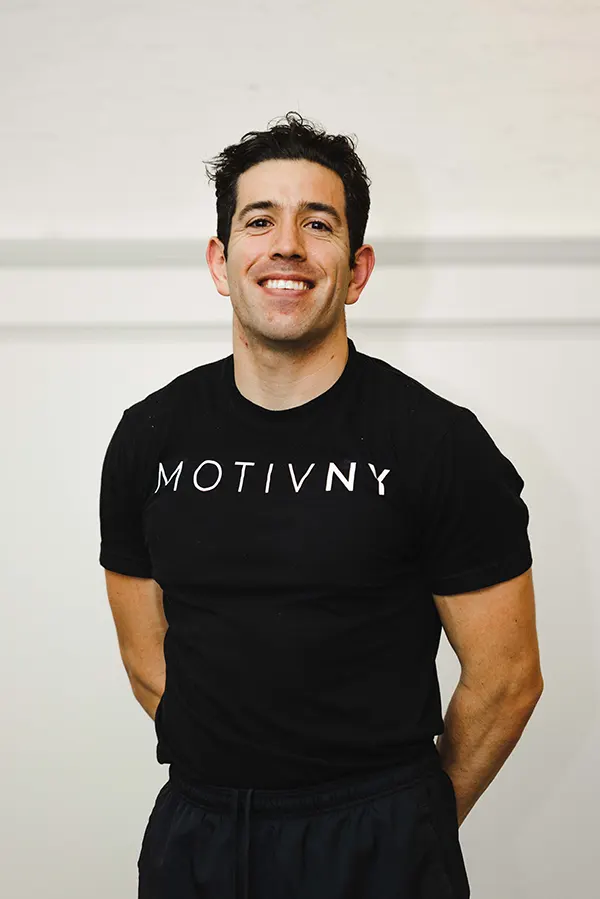PROTEIN - WHAT, WHY, HOW: Nutrition Tips with JP
July 12, 2022
WHAT IS PROTEIN?
Protein exists in most nutrient dense and whole food sources but in a variety of forms. This macronutrient is made up of a variety of amino acids that help you build, repair and recover essential structures of the body regardless if you’re actively training or on vacation. Protein is broken down into amino acids which have different chemical structures that are responsible for rebuilding and repairing various structures of the body making it a vital element for recovery.
WHY IS PROTEIN IMPORTANT FOR TRAINING?
Within the realm of strength training, we like to focus on muscle growth. If we don’t have enough protein or amino acids readily available in our body, our body will pull from its own resources to repair skeletal muscle mass. When protein is at a deficit, we’re likely to be catabolic, meaning we’re breaking down structures we need for metabolism. If we have enough amino acids and peptides available, we’re likely to be anabolic which means we are facilitating muscle growth.
HOW DO I GET ENOUGH PROTEIN FOR MY TRAINING GOALS?
Take a look at your hand and use your palm for reference. If you’re a meat eater, you can easily calculate your cutlet size by portioning to the size of your palm. Adhering to this model makes portioning easy and intuitive. If you are a person who likes to calculate in grams, this is about 20-30g per palm.

Men need about two palms per meal and women one palm.
This is subject to change based on activity level and body size. Regardless of your goal, the protein needed generally stays the same once you discover your ideal amount. Eating enough protein can help you stay satisfied when pursuing weight loss or anabolic when intentionally adding muscle mass.

In my experience as a coach and from several resources listed below, I created this chart to help me communicate how much protein a client needs depending on their activity level and goals. These ranges are suggestions and shouldn’t be used to treat any metabolic disorders as nutrition therapy.
Precision Nutrition Protein Sources: The Takeaway
Three big questions to ask yourself to determine if your protein intake is supporting your training and goals:
- How much protein are you currently getting on a daily or weekly basis?
- How does that number compare with the suggestions above?
- How much protein am I getting from whole food sources?
Interested in speaking with a coach first about your needs to see if nutritional coaching is right for you? Click here to schedule a new client consult call!
RECOMMENDED RESOURCES
PRECISION NUTRITION FOR PLANT BASED EATERS:
https://www.precisionnutrition.com/vegetarian-food-list-infographi
Dr. Mark Hyman and Dr. Gabrielle Lyon on “The Doctor’s Farmacy”
“Are we eating too much (or not enough) protein for good health?”
https://drhyman.com/blog/2019/07/03/podcast-ep61/
Dr. Huberman’s “Huberman Lab”
“Science of Muscle Growth, Increasing Strength and Recovery”
https://hubermanlab.com/science-of-muscle-growth-increasing-strength-and-muscular-recovery/>> jump to: 1:58:00 for Nutrition: Protein Density: Leucine Thresholds; Meal Frequency
Nutrition information pulled from:
Precision Nutrition Level 1, V.3
Berardi, John, and Andrews, Ryan, and St. Pierre, Brian, and Scott-Dixon, Krista, and Kollias, Helen, and Deputter, Camille, The Essentials of Sport and Exercise Nutrition, Third Edition, Precision Nutrition, Inc (2017).

